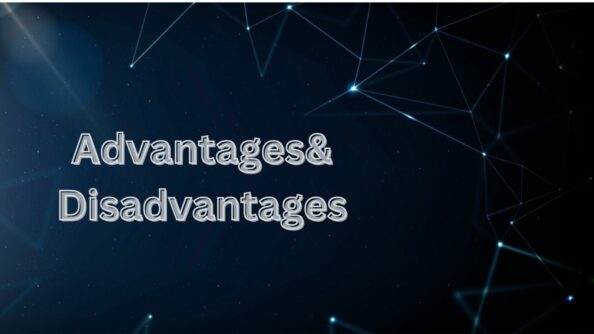Updated: Hyperledger Foundation is now a part of LF Decentralized Trust
Since decentralization is rising in popularity, many blockchain projects have come out to support the development of blockchain technology. Some of the most well-known projects are Bitcoin and Ethereum. However, there are also dark-horse projects that make life much easier for blockchain developers but haven’t received the same media coverage.
The Linux Foundation created the Hyperledger Project from the ground up to make blockchain more democratic and standardized for the business world. The platform leverages cross-industry knowledge to build custom blockchain applications, helping companies meet their specific needs and solve their problems efficiently.
This article will give you a comprehensive overview of the Hyperledger platform, including its strengths, weaknesses, and use cases. We will also try to understand if Hyperledger is worth your attention and can address your needs.

Hyperledger is an open-source environment that provides a wide range of projects, frameworks, guidelines, standards, and tools that enable enterprises and developers to create custom blockchain networks and applications. As a result, enterprises can build comprehensive blockchain-based solutions that meet their specific needs.
Hyperledger’s goal is to streamline blockchain application development and enable easy collaboration between companies and developers in the Distributed Ledger Technology (DLT) field. In other words, Hyperledger is an environment where leading organizations can meet and develop blockchain-based solutions to perplexing issues.
Hyperledger projects typically consist of several enterprise-ready permissioned blockchain platforms. Network participants are known to each other, so they have a vested interest in being involved in the decision-making process.
Using the available components under the Hyperledger umbrella strategy, any organization can deploy various modular blockchain solutions and services. These components can significantly improve the efficiency of their business processes and the performance of their operations, such as ensuring smooth transactions.
A few more words about the Hyperledger umbrella. This strategy proposes the reuse of standard building blocks that enable rapid innovation of DLT components. These components include frameworks, graphical interfaces, libraries, and smart contract engines. Therefore, the so-called umbrella strategy is quite convenient and can streamline many time-consuming and tedious tasks.
The Linux Foundation announced the creation of the Hyperledger Project in 2015, a year before its release. Brian Behlendorf was appointed executive director of the project. He claimed that the Hyperledger Project would never create its own cryptocurrency.
Hyperledger launched with 30 corporate members supporting the project. As of 2023, more than 100 companies are backing the project. Some of the biggest names include FedEx, IBM, T-Mobile, Walmart, and J.P. Morgan. What’s more, Hyperledger is also a member of the Enterprise Ethereum Alliance.
The goal of the project is to improve cross-industry collaboration through the development of blockchains and distributed ledgers. It also focuses on strengthening the reliability and performance of such systems to make them capable of supporting global business transactions.
Currently, Hyperledger has several blockchain frameworks developed by leading technology companies, including IBM and Intel. Burrow, Fabric, Indy, Iroha, and Sawtooth are some of the most widely used enterprise-grade Hyperledger frameworks.

The Hyperledger Foundation is an open-source community hosted by The Linux Foundation. It is a global collaboration aimed at developing a set of stable frameworks, libraries, and tools for enterprise-grade blockchain deployments. It includes leading finance, manufacturing, supply chain management, technology, banking, and IoT companies.
The concept of open collaboration and technical governance means that end users, individual developers, government associations, service and solution providers, and corporate members are all invited to develop and advance these innovations.
The Hyperledger Foundation takes a modular approach to hosting projects. For example, it hosts evolving business blockchain projects from Hyperledger Labs to production-ready code. Anyone is welcome to contribute to Hyperledger communities and projects and advance the industry goals of distributed ledgers and smart contracts.
You may be wondering why it is necessary to have Hyperledger. There are a few that explain the need for it. Let’s find them out.

Let’s dive into Hyperledger’s architecture and see what the key business components are.
As you already know, Hyperledger’s main goal is to streamline various business processes and ensure effortless task performance, as it can handle many tedious tasks. What’s more, the project welcomes different approaches from different teams. Hyperledger strives to be flexible to meet the needs of any organization. Let’s dive into its working principles.
First, nodes are added to the network and given the necessary permissions. Then a transaction is initiated and delivered to the peers. The message format and pattern can vary depending on the requirements. The peer then provides an authorization signature and simulates the transaction.
At the same time, another client acknowledges the same signature and collects the approval, which is then transmitted through the services involved. Next, the ordering service delivers the signature to the peer, and the approval policy is followed. Finally, after the checkpoints, the ledgers are validated, and the data can be accessed.
To better understand the concept, let’s study the example. Imagine John wants to send a product to Julie on a Hyperledger-based network. He looks at his application to find Julie’s address on the network. The app then calls the membership service and validates Julie’s membership.
Hyperledger connects both parties directly to the transaction associated with the deal. This way, both parties generate the same result, which is then validated. The result is sent to the consensus cloud to be ordered and verified. Once validated, Julie receives the product, and the transaction is written to the ledger.
Hyperledger sticks to the umbrella strategy. The strategy promotes and incubates a wide range of business blockchain technologies. For instance, they include graphical interfaces, smart contract engines, distributed ledger frameworks, applications, and libraries.
In addition, Hyperledger encourages the reuse of building blocks. It also facilitates the innovation of distributed ledger technology components.
Hyperledger Burrow is one of the Hyperledger Projects that offer a modular blockchain client. This client is necessary to build a permissioned smart contract machine with the specification of Ethereum Virtual Machine, or EVM for short. Hyperledger Burrow is hosted by the Linux Foundation.
Burrow’s capabilities include high transaction throughput and transaction finality due to its proof-of-stake consensus engine. Let’s take a closer look at the components that make up Burrow.
Consensus Engine. Transactions are executed and ordered using the Byzantine fault-tolerant Tendermint protocol. This protocol protects the blockchain from forking and provides high throughput for a set of known validators.
Smart Contract Application. Transactions are validated to the application state in the order determined by the consensus engine. The application state includes all accounts, the name registry, and the validator set. Burrow accounts either resemble the public-private key pair or contain a smart contract code. Any transaction that interacts with the smart contract code executes the account’s code on an authorized virtual machine.
Application Blockchain Interface (ABCI). This component enables the smart contract application to interact with the consensus engine.
Application Binary Interface (ABI). Transactions must be presented in binary form for the blockchain to process them. Hyperledger Burrow tools provide the functionality to deploy, compile, and link Solidity-based smart contracts and execute transactions to invoke smart contracts on the chain.
API Gateway. Burrow exposes JSON-RPC and REST endpoints to interact with the application state and blockchain network by querying the application’s current state or transmitting transactions.
Hyperledger Indy is designed to provide a decentralized identity. The project serves as a distributed ledger and provides libraries, tools, and reusable components that help create digital identities on the blockchain. Hyperledger Indy offers an ecosystem to ensure a robust, private, and secure identity.
Indy also aims to give users full control over their data, protecting their identifiable information from attacks and data breaches. Users’ private data is not stored on the Hyperledger Indy ledger. Instead, the blockchain is used to grant permissions to third parties to validate that the trusted organizations have issued the private credentials. The ordering and validation processes are subject to Redundant Byzantine Fault Tolerance.
Hyperledger Fabric is a distributed ledger platform that delivers confidentiality, flexibility, scalability, and resilience based on a modular architecture. Hyperledger Fabric is explicitly designed to provide pluggable implementations of different components. As a result, it can address many of the complexities that exist across the economic ecosystem.
Unlike an open, permissionless system that allows unknown participants to access the network, Hyperledger Fabric provides access to members via a trusted membership service provider.
The ledger subsystem of Hyperledger Fabric consists of two components, such as the world state and the transaction log. The world state is the component that describes the state of the ledger at any given time. The transaction log records all transactions that have generated the current value of the world state. Therefore, you can regard a ledger as the combination of the world state database and the transaction log history.
Hyperledger Fabric’s smart contracts are written in chaincode and are invoked when the application needs to interact with the ledger. Chaincode can be written in Go and Node programming languages.
Hyperledger Fabric allows network founders to choose a consensus algorithm that represents the best relationship between network participants. It is also ideal for supporting systems where privacy is a critical requirement, such as a B2B network.
Hyperledger Iroha is one of the Hyperledger Projects hosted by The Linux Foundation. It is used to build secure, robust, and trusted blockchain applications through the Byzantine Fault-Tolerant Consensus algorithm. The platform can also be used to manage digital assets, identity, and serialized data. It can be useful for many applications, including central bank digital currencies, national IDs, and interbank settlements.
Hyperledger Iroha doesn’t have a native cryptocurrency. Instead, only authorized users can participate in the system, as Iroha’s interaction with the system is permissioned. Queries are also permissioned, providing control over data access. Hyperledger Iroha has pre-built commands that allow users to create and transfer digital assets.
Iroha is based on a consensus algorithm called Byzantine Fault-Tolerant Algorithm. It enables high transaction performance and lower transaction latency. Hyperledger Iroha increases the overall security of the system by limiting the attack vector.
Validation nodes, which can distribute partially signed transactions on the Gossip protocol as part of multi-signature transactions, are the peers of Hyperledger Iroha. The ledger state is stored in the PostgreSQL database, while blocks are stored in files.
Hyperledger Sawtooth is an enterprise blockchain platform for building distributed ledger applications and networks. Its design preserves the distributed nature of ledgers while ensuring the security of smart contracts.
The platform simplifies blockchain development by separating the core system from the application domain. Blockchain developers can choose the language to specify business rules. Sawtooth’s modularity allows enterprises to choose consensus algorithms, transaction rules, and permissions according to their business needs.
Each application determines the custom transaction processors according to its requirements. The transaction processor SDKs are available in a variety of languages that facilitate the creation of new contract languages, such as C++, Go, Java, JavaScript, Python, and Rust.
Hyperledger Sawtooth provides an advanced parallel scheduler that breaks transactions into parallel flows. This allows transactions to be executed in parallel and prevents users from duplicating efforts by making different changes to the same state. As a result, parallel transaction execution increases performance over serial execution.
In addition, Hyperledger Sawtooth supports Ethereum Contract Compatibility with Seth, the Sawtooth-Ethereum integration project. The Seth transaction family enables smart contracts running on the Ethereum Virtual Machine to be deployed on the Hyperledger Sawtooth platform.
Sawtooth uses different types of consensus algorithms on the same blockchain, which can be initially selected during network setup and changed with a transaction on a running blockchain. Currently, Hyperledger Sawtooth supports consensus implementations such as Dev Mode, PoET Simulator, and Proof of Elapsed Time.
Dev Mode is a random leader algorithm used for testing and development. PoET Simulator provides PoET-type consensus on any hardware, such as a virtualized cloud environment. Proof of Elapsed Time is a consensus algorithm designed to be a production-grade protocol supporting large network populations. It relies on secure instruction execution to achieve the scaling benefits of Nakamoto-style consensus without the power consumption drawbacks of the Proof of Work algorithm.
The implementation of a transaction language and data model is done through a transaction family. The transaction family includes Identity, IntegerKey, and Settings. Identity manages on-chain permissions for validator and transactor keys to facilitate identity management for lists of public keys. IntegerKey is required for verifying deployed integers, while Settings provides a reference implementation for storing on-chain configuration settings.
Hyperledger Grid is a Hyperledger Project ideal for supply chains. Supply chain management is one of the most beneficial use cases of the distributed ledger, so the Hyperledger community decided to develop supply chain solutions using shared and reusable tools. What’s more, Hyperledger Grid also has shared capabilities to speed up the development of distributed ledgers for cross-industry supply chain solutions.
Hyperledger Grid provides reference implementations of smart contract-based business logic, supply chain-focused data types, and data models based on existing industry best practices and open standards. Grid is neither a blockchain nor an application; but rather an ecosystem of frameworks, libraries, and technologies that work together and allow developers to select the most appropriate components for their market model.

Hyperledger Caliper
Hyperledger Caliper is a blockchain benchmarking tool introduced by The Linux Foundation. It allows users to measure the performance of a particular blockchain implementation using a set of predefined use cases.
Hyperledger Caliper also generates reports on key performance factors, such as transaction latency, resource utilization, and transactions per second (TPS). It has the adaptation layer, a component that can integrate numerous blockchain solutions into the Caliper framework.
Caliper NBI is a set of blockchain interfaces that include operations for interacting with a backend blockchain system, such as installing and invoking smart contracts.
Hyperledger Cello
Hyperledger Cello is a blockchain module toolkit and one of the projects hosted by The Linux Foundation. It aims to bring the on-demand, as-a-service deployment model to the blockchain ecosystem to significantly reduce the effort required to create, manage, and terminate blockchains.
Hyperledger Cello also provides a multi-tenant chain service and works on multiple infrastructures, including container platforms, bare metal, and virtual machines. Cello was originally provided by IBM and sponsored by Huawei, Intel, and Soramitsu.
Hyperledger Explorer
Hyperledger Explorer is a blockchain module and one of the Hyperledger projects hosted by The Linux Foundation. It is designed to create a user-friendly web application, so it is used to view, deploy, invoke, or query blocks, transactions and associated data, chain codes and transaction families, network information, and other relevant data stored in the ledger. Hyperledger Explorer was originally contributed by IBM, Intel, and DTCC.
Hyperledger Composer
Hyperledger Composer is an open development framework and toolkit that streamlines the development of blockchain applications and smart contracts. With Composer, blockchain-based applications can be developed and deployed much faster.
Hyperledger Composer was built using JavaScript and other tools, including the CLI, NPM, and Node.js. Composer provides business-oriented abstractions and sample applications with an easy-to-test DevOps process. As a result, Hyperledger Composer creates reliable blockchain solutions that can transform business operations with technical development.
Hyperledger Quilt
Hyperledger Quilt is a business blockchain tool and one of the Hyperledger projects hosted by The Linux Foundation. It provides interoperability between ledger systems by implementing the Interledger Protocol (ILP), which is essentially a payment protocol designed to transfer value between distributed and non-distributed ledgers. ILP also provides atomic swaps between a single account namespace for accounts and ledgers, including non-blockchain and distributed ledgers. Hyperledger Quilt was initially contributed by NTT Data and Ripple.
Hyperledger Ursa
Hyperledger Ursa is a shared cryptographic library that allows users to avoid duplicating other cryptographic work and increase overall security. Ursa includes the Base-Crypto Library and Z-Mix subprojects.
Base-Crypto Library is a modular signature library that can implement multiple signature schemes with the help of a common API, allowing blockchain developers to customize signature schemes on the fly.
Z-Mix provides a secure implementation for creating zero-knowledge proofs of commitments, signatures, and verifiable encryption.

Now, let’s move on to some real-world examples of the applications that have been developed through Hyperledger Projects.
Let’s see how Ethereum and Hyperledger differ.
Purpose
Ethereum is a platform for building decentralized applications and B2C businesses. The platform aims to run smart contracts on the Ethereum Virtual Machine (EVM) and create dApps for mass consumption. Hyperledger, on the other hand, is suitable for building cross-industry applications and B2B businesses. The platform helps companies collaborate with developers working with Distributed Ledger Technology to create custom, limited-access blockchain applications.
Confidentiality level
Ethereum is a public network, so all transactions are completely transparent, and any internet user can view these transactions. In contrast, Hyperledger is an authorized or limited-access blockchain network, which means it is highly protected and confidential. Only those individuals or organizations with the Certificate of Authorization can view all network transactions.
Peer participation
Ethereum can be both a private and public network, so anyone with access to the Internet can download the software and start mining Ethereum. Hyperledger, in turn, maintains strict control over network participation. Only authorized users and their chosen peers are allowed to use the Hyperledger platform and its tools. This protects sensitive and valuable information from outside parties and prevents tampering.
Consensus mechanism
Because Ethereum is a transparent blockchain, every participant in the network participates in decision-making. To complete a transaction in the network, all participants must reach consensus, regardless of whether a node is participating in the transaction. Ethereum achieves consensus through the Proof of Stake algorithm, where all nodes must agree and have access to the recorded entities.
Because Hyperledger is a private and permissioned network, it doesn’t require a consensus mechanism to validate transactions. When two participants agree on a particular transaction, no third party can view or interfere with the transaction. This helps increase scalability, transaction rates, and network performance.
Programming language
Ethereum uses Solidity for writing smart contracts and Go, JavaScript, and Python for building applications. The Hyperledger platform primarily uses Go for writing chaincode, along with Java and JavaScript.
Cryptocurrencies
Ethereum has its own native cryptocurrency called Ether (ETH), so any participating node can pay gas fees and mine ETH. Hyperledger has no native cryptocurrency and is not involved in mining.

Another comparison of the Hyperledger platform with others, this time with Corda.
First, let’s look at Corda’s key features:
Use case
The Hyperledger platform aims to provide a modular, extensible architecture across industries, while Corda is primarily used in the financial services industry.
Peer participation
In Corda and Hyperledger, network participants are pre-defined so that only they can access the network.
Consensus mechanism
When it comes to Hyperledger and Corda, consensus does not require all nodes in a network to participate in the consensus process. Corda comes with two types of consensus: transaction validity and transaction uniqueness.
In the first case, parties must verify all associated contract codes and provide all required signatures. For transaction uniqueness, the parties must ensure that a given transaction is a unique consumer of all specified inputs. This process includes confirming that no other transaction consumes any of the agreed-upon states.
Programming language
The Hyperledger platform uses Go, as well as some Java and JavaScript. The Corda platform is based on Kotlin, a programming language that targets JavaScript and JVM. Using Kotlin allows Corda to provide a high level of integration like any other programming paradigm.
Cryptocurrencies
Corda and Hyperledger do not have a native cryptocurrency because the consensus does not require a mining process.

Modular architecture
Hyperledger has a modular architecture that allows developers to create plug-in components. This feature makes it easy for developers to include the components they need, such as custom identity management. Custom identity management systems are widely used in enterprise-grade blockchains, and Hyperledger’s modular architecture allows enterprises to reuse existing systems to build permissioned blockchains.
Performance and scalability
Hyperledger does not include crypto mining and the Proof of Work algorithm, which provides high scalability and enables fast transactions. Transaction validation reflects how a transaction workflow runs in a typical enterprise.
Transaction processing starts with distributed logic processing and agreements, including chaincodes. Then transaction ordering takes place. Finally, the transaction is validated and committed.
Ability to split data
Financial services organizations need to protect their sensitive data. They are constantly looking for new security technologies to stay ahead of hackers. Hyperledger includes channels that allow data to be physically separated for better protection.
Hardware-based protection of digital keys
Hyperledger includes a Hardware Security Model (HSM) that enables the management and protection of digital keys used for authentication. HSM enhances the protection of keys and sensitive data for the identity management use case.
Rich community support
The Hyperledger community is one of the richest development communities in existence. It includes world-renowned companies such as Deloitte, Oracle, Huawei, and many more. Community members come from a wide range of industries and have deep expertise in both blockchain technology and their fields. The combined power of the community is paying off in Hyperledger’s development roadmap.
The disadvantages of Hyperledger are mainly related to the fact that the network is new. They include:

Building enterprise-grade blockchains is not easy. Hyperledger was created to simplify the process. It’s always a good idea to turn to reliable existing solutions rather than spend time and money developing a blockchain from scratch.
Amazon, IBM, Intel, and other internationally-recognized companies have joined forces to create special guidelines, platforms, solutions, and tools that will essentially simplify the development process. What’s more, even leading universities like Cambridge, UCLA, and Yale have also joined this association to contribute to the development of technology.
Currently, we see that this association of top companies and universities has successfully launched several well-known projects, including Hyperledger Fabric, Indy, and Sawtooth, to name a few. These projects are considered helpful and useful.
Installing a blockchain using Hyperledger includes development and infrastructure costs. This approach is easier because the leading cloud computing providers offer Hyperledger infrastructure.
Why is Hyperledger the better solution? First, it is an off-the-shelf blockchain platform that addresses many important features, including the consensus algorithm, file sharing and encryption, and a peer-to-peer network. Second, Hyperledger provides a high level of trust, so you can be confident that your enterprise-grade blockchain will be secure.
There is also strong community support. So if you have a problem, the community of developers will do their best to help you solve it. These communities are thriving today and will continue to grow as the demand for Hyperledger projects increases.
Last but not least, Hyperledger has a modular architecture that allows you to add as many features as you want. This makes Hyperledger projects extremely flexible and customizable.

Blockchain is not just about cryptocurrencies. A deep understanding of Hyperledger tools, frameworks, and projects allows us to see the applications of blockchain technology beyond monetary purposes and unlock its maximum potential.
Hyperledger’s supporters include some of the world’s leading companies across a wide range of industries, including IBM, Bosch, and FedEx. They work together to share their experience, making Hyperledger a perfect fit for companies looking for a platform to build enterprise-grade blockchains. Even though the platform is relatively new and may seem quite unexplored, its strengths cover any potential drawbacks.
If you have any questions or brilliant ideas, don’t hesitate to contact our team of blockchain experts. We’ll help you turn your ideas into reality.